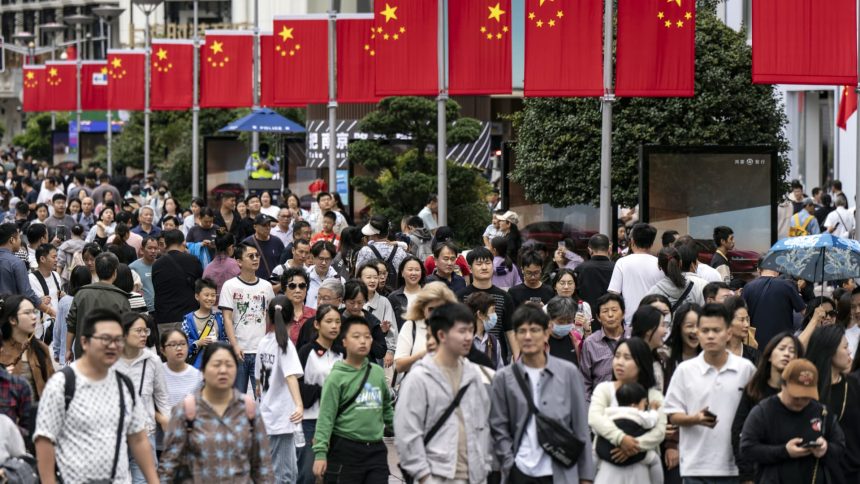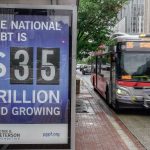Chinese investors are looking for more policy direction from China’s top economic planning body on Tuesday, when mainland markets return from a week-long holiday.
A panel of senior officials from the National Development and Reform Commission, including chairman Zheng Shanjie, will brief reporters on the implementation of stimulus policies at the press conference on Tuesday at 10 a.m. local time, according to the notice from the State Council on Sunday.
Economists and traders are closely watching for additional policy measures as Beijing has signaled a sense of urgency in bringing its economy back on track to hit the annual growth target of “around 5%.”
Before the week-long holiday, authorities unveiled a flurry of stimulus policies, including interest rate cuts, lower cash reserve requirements at banks, looser property purchase rules and liquidity support for stock markets.
Chinese major indexes have surged over 25% as investors cheer on the barrage of stimulus measures. Last week, China’s CSI 300 blue-chip index extended a nine-day winning streak, surging over 8% Monday, before the market closed for a week-long holiday. Hong Kong stocks, however, reopened Wednesday last week and traded above 23,000 on Monday for the first time since 2022.
The futures contracts tied to MSCI China A50 Connect Index, which tracks 50 mega-cap stocks in the A-share market, have surged nearly 15% since Sept. 30, to 2,536.6 as of 2:30 p.m. on Monday. The SGX FTSE China A50 Index futures also surged 12.7% to 15,672 over the same holiday period.
Speculating rally
Ever since Beijing pledged a ramp-up in fiscal spending on Sept. 26, the market has been waiting for specifics, said Erica Tay, director of macro research at Maybank Investment Banking Group, “it will be important for the NDRC to put meat on the bones.”
The Ministry of Finance is not participating in Tuesday’s presser and has not yet announced major policies to support growth, despite reports of such plans. Now the government needs to add fiscal stimulus to maintain the rally’s momentum, said Shaun Rein, founder and managing director of China Market Research Group. Rein said the key thing to watch for in Tuesday’s meeting is if the new measures target the real economy.
In the very near term, the optimism might continue “albeit at a less furious pace,” said Lynn Song, chief economist of Greater China at ING, suggesting that policymakers might press forward with more supportive policies to “capitalize on the positive momentum coming out of the long break.”
But the rally’s momentum depends on the actual implementation of previously announced policies and “how soon and aggressively” policymakers come up with follow-up support measures to boost consumer confidence and economic activity, Song said.
“If any of these things fall short, the optimism could falter,” he said.
A-shares have been moving toward the high end of a “relatively reasonable band” and trading above historical valuation levels, Song said. A-shares refer to stocks listed on the exchanges in Shanghai or Shenzhen.
Room for the market to continue rallying is “narrowing,” said Gary Ng, senior economist at Natixis, “it now depends on real improvements in the economy to justify the valuations.”
He expects the NDRC to announce the exact amount of additional fiscal policy on Tuesday, focusing on real estate and consumption.
Expectations running wild
Yet some like Hong Hao, chief economist at GROW, believe the Tuesday presser will likely “underwhelm,” leading the market to open higher but eventually settle lower.
He pointed out that officials could simply repeat previous announcements and give some details on plans for the unused bond issuance quota, which he noted is over 3 trillion yuan ($427.4 billion).
The key now will be “less the quantity of stimulus, but the actual mechanism to help boost wages, consumption and overall consumer confidence,” said Eugene Hsiao, head of China equity strategy at Macquarie Capital. While China has often deployed fiscal stimulus, he warned that the effect is often limited as it is reflected in muted market reaction.
Economists at Morgan Stanley expect a 2-trillion-yuan fiscal package, which could be used to support local government finances, recapitalization of major banks and boosting consumption, according to FactSet. The bank said a smaller-than-expected package could also signal Beijing’s commitment to end deflation and support growth.
UBS penciled in a more modest fiscal package in the range of 1.5 trillion to 2 trillion yuan this year, with further follow-up of 2 trillion to 3 trillion yuan in 2025, according to FactSet.
The upside to the market could be significant if Beijing presses forward with anticipated fiscal support. Citibank raised its forecast for Hong Kong’s Hang Seng Index, saying it could now reach 26,000 by June 2025. It expects Beijing’s economic stimulus measures could exceed market expectations with a 3-trillion-yuan consumption support package to come soon.
Read the full article here




